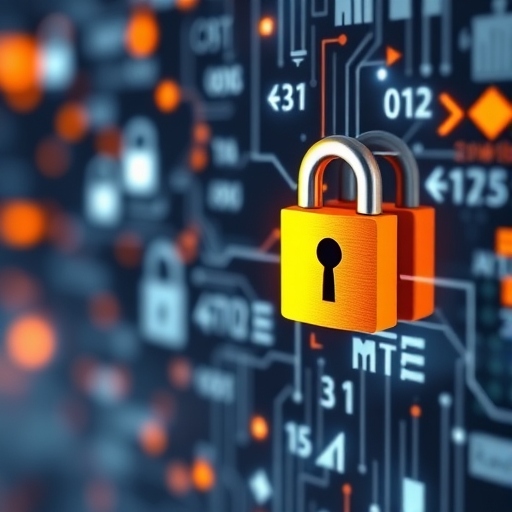Data Security in Data Entry Services
Data security in data entry services is crucial because these services often handle sensitive, personal, or business-critical information. Ensuring the confidentiality, accuracy, and integrity of data during its collection, entry, processing, and storage is essential to protect against data breaches, fraud, and unauthorized access. Below are key aspects of data security specific to data entry services:
1. Confidentiality Agreements and Non-Disclosure Agreements (NDAs)
- Employee and Vendor Agreements: Data entry service providers should require employees and subcontractors to sign confidentiality agreements or NDAs, ensuring they understand their responsibility to protect sensitive data.
- Third-Party Vendors: Any third-party vendors involved in the data entry process should also boun by strict confidentiality clauses to prevent unauthorized sharing of data.
2. Data Encryption
Encryption in Transit and at Rest: Data should encrypt both when transmitted (e.g., using SSL/TLS protocols for web-based data entry) and when stored in databases or servers, ensuring that sensitive data remains secure even if intercepted.
- End-to-End Encryption: This ensures that data encrypted from the point of entry through to its final destination, preventing any unauthorized access along the way.
3. Access Control and Authentication
- Role-Based Access Control (RBAC): Implement strict role-based access to ensure only authorized personnel can access specific data. For instance, sensitive financial data should only be accessible by designated employees.
- Authentication Protocols: Strong user authentication methods, such as multi-factor authentication (MFA), should use to prevent unauthorized access to systems where data entered or processed.
- User Activity Monitoring: All user activity related to data entry should monitor to detect unusual or unauthorized access, ensuring quick responses to potential security threats.
4. Secure Data Entry Platforms and Software
- Secure Web Interfaces: If data entry done through a web portal, it should use secure technologies like HTTPS to protect data during transmission. The platform should test regularly for vulnerabilities.
- Data Entry Validation: To prevent erroneous or malicious data from entered, systems should include input validation features such as formatting checks (e.g., phone numbers, dates) and anti-malware checks to detect malicious data injection (e.g., SQL injection).
- Masked Data Entry: Sensitive data fields (e.g., credit card numbers, Social Security numbers) should mask during data entry to ensure employees or contractors cannot view the full data.
5. Compliance with Data Protection Regulations
- GDPR (General Data Protection Regulation): For clients in the European Union, data entry services must comply with GDPR, which includes requirements for secure data processing, user consent, and data retention policies.
- HIPAA (Health Insurance Portability and Accountability Act): If handling healthcare-related data, data entry services should comply with HIPAA, ensuring that protected health information (PHI) is secure.
- Other Regional Regulations: Depending on the location, data entry services should comply with relevant data protection laws, such as CCPA (California Consumer Privacy Act) in California, or the PDPA (Personal Data Protection Act) in Singapore.
6. Data Integrity and Accuracy
- Error Detection Systems: Automated error-checking tools can help flag inaccurate, incomplete, or inconsistent data, ensuring that the data entered is accurate and correct.
- Audit Trails and Logs: Keeping detailed logs of data entry activities provides traceability, allowing organizations to detect errors or unauthorized changes. Audit trails also help in ensuring that any security breaches identified promptly.
- Manual Review: In addition to automated error detection, manual reviews of critical data can help catch mistakes that systems may overlook, ensuring the integrity of the data.
7. Data Backup and Recovery
- Regular Backups: Ensuring regular backups of the entered data can prevent data loss due to system failures, natural disasters, or cyberattacks. Backup systems should be secure, encrypted, and regularly tested.
- Disaster Recovery Plans: A robust disaster recovery plan should be in place to quickly restore data in the event of an attack or other data loss incidents, minimizing downtime and ensuring business continuity.
8. Employee Training and Awareness
- Security Awareness Training: Regular training sessions for all employees and contractors involved in data entry on the importance of data security, phishing scams, password management, and other best practices.
- Incident Reporting Procedures: Employees should train on how to report potential data breaches or suspicious activities promptly.
9. Data Minimization
- Only Collecting Necessary Data: Data entry services should ensure they only collect the minimum amount of data required for the task at hand, reducing the risk of exposure if a breach occurs.
- Data Anonymization: In some cases, anonymizing or pseudonymizing data can help reduce the risk, especially for sensitive or personal data.
10. Third-Party Vendor Security
- Security Audits for Vendors: If data entry services outsourced to third-party providers, it’s crucial to conduct security audits and assess the vendor’s compliance with data security standards.
- Vendor Security Certifications: Third-party vendors should be able to demonstrate that they meet industry standards for security, such as ISO 27001 certification or SOC 2 compliance.
11. Physical Security
- Secured Work Environments: Offices or facilities where data entry is conducted should have strong physical security measures such as locked doors, security cameras, and restricted access to prevent unauthorized physical access to systems.
- Secure Devices: All devices used for data entry (e.g., computers, tablets) should secure with encryption, password protection, and remote wipe capabilities in case of theft.
12. Periodic Security Audits and Penetration Testing
- Vulnerability Assessments: Regularly testing the security infrastructure of data entry services through vulnerability scans and penetration testing can identify potential weaknesses before they exploited.
- Audit Reports: Conducting regular security audits ensures that the data entry processes adhere to security policies and best practices.
By implementing these data security measures, data entry services can mitigate the risk of data breaches, maintain regulatory compliance, and protect sensitive information from unauthorized access.
We are also on Facebook
Go back to home page: www.mistyinfotech.com
If you want to Direct Data Entry Projects with Company with Us Please go here: Direct Data Entry Projects with Company







